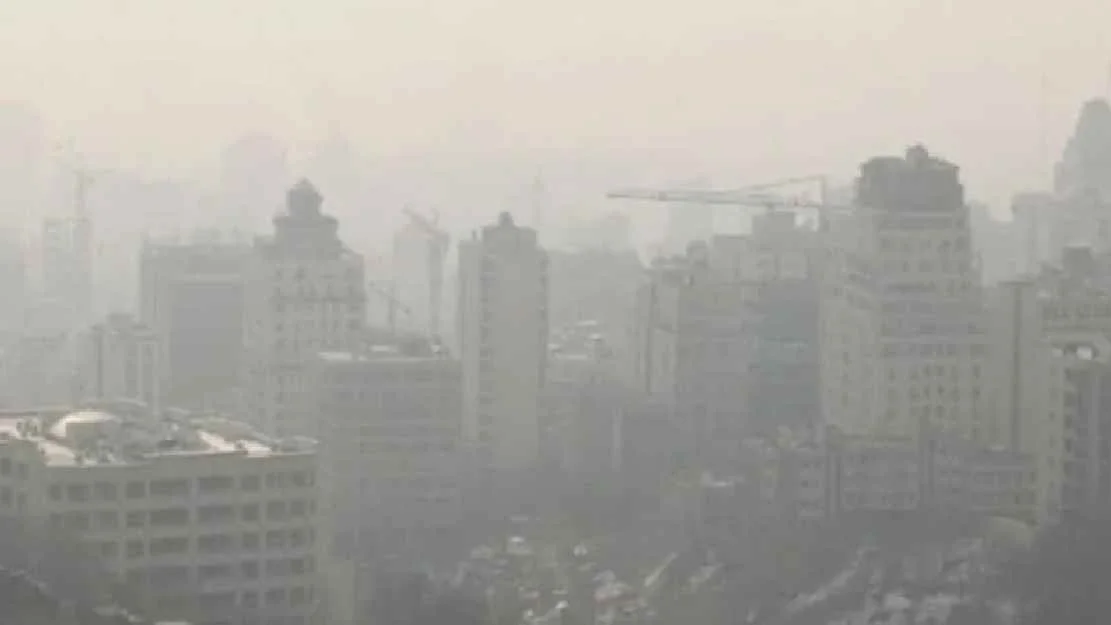Bangladesh breathing polluted air
Share on:

At 12 noon on Thursday, Dhaka’s air quality was 3rd worst in the world. Only two Chinese cities – Wuhan and Chengdu – had higher levels of pollution in air.
A day earlier Dhaka was only second to Bosnian capital Sarajevo in terms of having polluted air and overnight Dhaka was the worst.
According to Switzerland-based IQAir, which keeps track on air quality in 124 cities all over the world, Bangladesh’s average fine particles (PM2.5) concentration was 16 times the WHO annual air quality guideline value in 2023.
Around midday yesterday, it was over 33 times the WHO annual air quality guideline value.
IQAir advised people living in Dhaka to shut windows to avoid dirty outdoor air, wear masks outdoors, avoid outdoor exercise and run air purifiers.
In a blog post recently, World Bank Group’s Regional Director for South Asia Sustainable Development, Dina Umali-Deininger cautioned breathing Dhaka’s air could be equivalent to smoking 1.7 cigarettes per day.
Air pollution having the most harmful effect on health, leads to more than 159,000 premature deaths annually in Bangladesh. This makes air pollution arguably the biggest environmental risk the country enduring now.
But the measures the country took so far to safeguard its people from a pollution disaster is anything but serious.
A seven-year National Air Quality Management Plan (NAQMP) that Bangladesh adopted in November last year, acknowledged brick kilns, dusts and emissions by rickety road transports and open burning of solid wastes as some of the key contributors to the country’s extremely unhealthy air quality.
But when it comes to act – Bangladesh keeps on foot-dragging on key decisions to improve air quality.
Rickety buses have ‘nine lives’
Following the 2018 student-led safe road movement, Bangladesh’s national road safety body recommended immediate scrapping of buses, trucks and lorries those have had their economic life long expired.
More than six years after that official statistics provided by Bangladesh Road Transport Authority (BRTA), shows there are 35,782 registered buses older than 20 years and 37,275 trucks and lorries over 25 years are still hitting the roads.
On March 31 last year, then Environment, Forest and Climate Change Minister Saber Hossain Chowdhury directed that 20-year old buses, which have exceeded their economic life, should be withdrawn from the city streets as a measure toward checking air pollution. BRTA was asked to come up with a list of old, unfit buses plying in Dhaka city by April 8, and asked the transport operators to provide a plan to withdraw the buses by April 20.
Again, on October 6 last year under the leadership of new advisor in charge of environment Syeda Rizwana Hasan, the Department of Environment wrote to BRTA to make sure the rickety, unfit buses, trucks and lorries are off-street.
Now issuing a notice last month BRTA gave transport owners five more months to withdraw the unfit buses from the roads in Dhaka city.
However, authorities in Bangladesh earned notoriety of withdrawing such notices in the past under the influence of politically-linked powerful transport owners’ lobby.
Curious case of a never-ending drive
Brickkilns, sprung up illegally all over the country, have a huge contribution to the country’s worsening air pollution. They’re responsible for 13 percent of air pollution and 25 percent of sulfur dioxide in the country’s air.
Sulfur oxide is very toxic if inhaled and can irritate the eyes. It contributes to respiratory illness and aggravate existing heart and lung conditions. It can damage trees and plants, inhibit plant growth, and damage sensitive ecosystems and waterways.
Official statistics show presence of over 7,000 brickkilns in the country but no clear account on how many of those were running without any license, environmental clearance whatsoever.
In February, 2022, upon instructed by a High Court bench, then director general of DoE, submitted a list of 319 brickkilns – which were illegally running in Dhaka and its four surrounding districts (Gazipur, Munshiganj, Narayanganj and Manikganj).
Very interestedly, in its annual report that year (2021-22) DoE claimed of successfully shutting all illegal brick fields in those five districts but mentioned the number to be 165 only.
As recently as early March last year, then minister Saber H Chowdhury stated that government managed to close down 209 illegal brickkilns within first 100-day’s of coming to power.
But the DoE drive against illegal brickkilns in Bangladesh appears a never-ending game.
The post-July Revolution government now says it has shut about 150 illegal kilns over the last few months – over 100 of those in December-January alone.

